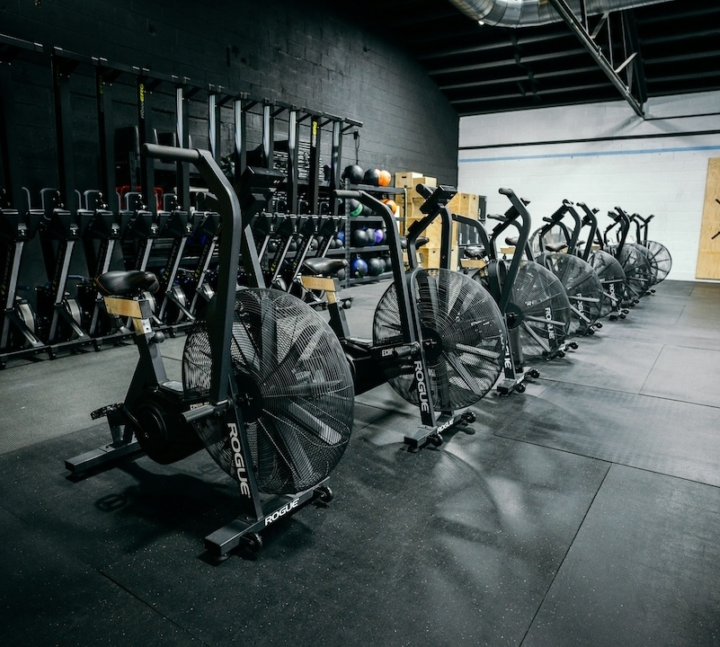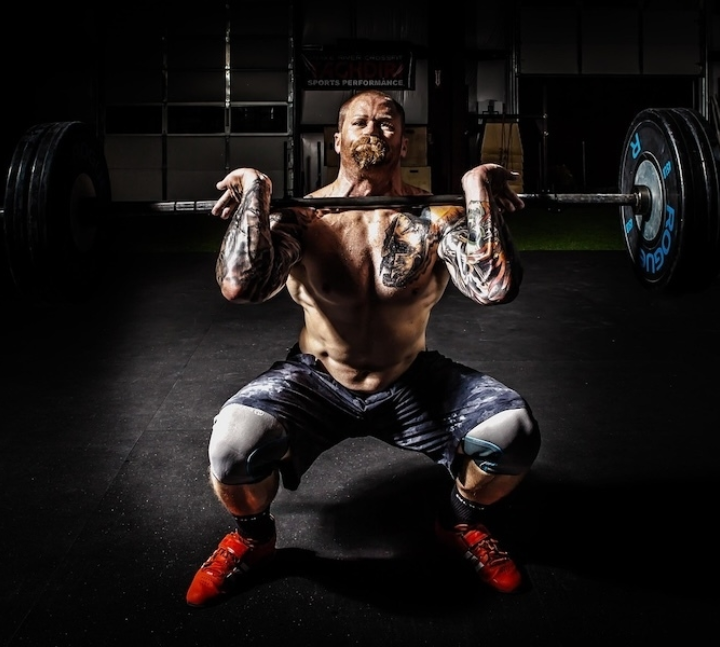Exercise
Burpee Broad Jump
How to Perform - Burpee Broad Jump
- Begin in a standing position with feet shoulder-width apart, arms at your sides, and core engaged.
- Bend at the knees and hips to squat down, placing your hands on the floor just in front of your feet while keeping your back flat.
- Kick your feet back into a plank position, maintaining a straight line from head to heels with your core tight and shoulders positioned directly over your wrists.
- Lower your chest to the floor by bending your elbows at a 45-degree angle from your body while inhaling.
- Push through your palms to straighten your arms as you exhale, maintaining a rigid plank with engaged core and glutes.
- Jump your feet forward to return to the squat position, landing softly with your knees tracking in line with your toes.
- From the squat, explosively extend your hips, knees, and ankles while swinging your arms forward to propel yourself into a forward jump, exhaling during the effort.
- Land softly with bent knees to absorb the impact, immediately beginning your next repetition by squatting down and placing your hands on the floor.
Important information
- Keep your core engaged throughout the entire movement to protect your lower back, especially during the plank and push-up portions.
- Maintain proper push-up form by keeping your elbows at approximately 45 degrees from your body rather than flaring them out to the sides.
- Land softly on the balls of your feet first, then roll to your heels when jumping forward to minimize joint stress.
- Scale this exercise by removing the push-up or performing step-backs instead of jumps if needed for your fitness level.
Primary Muscles
Muscle Groups
Mechanic
Risk Areas
Built for progress
Take the guesswork out of training
Create personalized AI-powered workout plans that evolve with you. Train smarter, track every rep and keep moving forward, one workout at a time.






The Burpee Broad Jump stands as a formidable total-body movement that combines explosive power, cardiovascular endurance, and muscular strength into one comprehensive exercise. This intermediate-level movement has gained tremendous popularity in both HIIT and CrossFit training circles for its efficiency in targeting multiple muscle groups simultaneously while elevating your heart rate. When performing this dynamic exercise, you'll engage your pecs during the push-up portion, creating that chest-building tension that helps develop upper body strength. Your quads and glutes activate powerfully during both the squat component and especially during the explosive jump phase, where they generate the forward propulsion needed for distance. Throughout the entire movement, your core muscles remain engaged, with your abs working overtime to maintain proper form and body alignment. What makes this exercise particularly valuable is its dual nature of building endurance while delivering serious cardio benefits. The rapid transitions between movements create an oxygen demand that challenges your cardiovascular system, making it an excellent choice for those looking to improve conditioning while burning significant calories. This exercise efficiently combines strength and cardio elements, eliminating the need to separate these training components. The beauty of the Burpee Broad Jump lies in its adaptability across fitness levels. While categorized as intermediate, it can be modified or intensified based on your specific goals and capabilities. Many athletes incorporate this movement into their training to develop power, explosiveness, and stamina—all qualities that transfer well to various sports and daily activities. For those seeking efficiency in their workouts, this exercise delivers exceptional bang for your buck, recruiting major muscle groups while simultaneously challenging your cardiovascular system. Its inclusion in HIIT and CrossFit programs speaks to its effectiveness as a metabolic conditioning tool that pushes physical boundaries and builds mental toughness alongside physical strength.
FAQ - Burpee Broad Jump
This exercise targets multiple muscle groups simultaneously including chest and triceps during the push-up, quads and glutes during the squat and jump phases, and core muscles throughout the entire movement. Your shoulders, hamstrings, and calves also get significant engagement, making it a true full-body exercise.
Beginners can start with a partial squat depth and press lighter weights or no weights at all. You can also separate the movements initially, mastering the squat first, then the overhead press, before combining them into one fluid motion.
The most common mistakes include rounding your lower back, rotating your hips instead of keeping them square, rushing through the movement, and not hinging properly at the hips. Focus on maintaining a neutral spine, moving with control, and keeping your standing knee slightly soft rather than locked.
For most fitness enthusiasts, incorporating this exercise 2-3 times per week is sufficient, allowing 48 hours for muscle recovery between sessions. Consider including it in HIIT circuits or as a finisher, starting with 3-4 sets of 6-10 repetitions depending on your fitness level.
Yes, this exercise significantly improves power, explosiveness, and conditioning that transfers to many sports. The combination of horizontal jumping power and upper body strength mirrors movements found in basketball, volleyball, football, and track events, while the cardiovascular demand enhances overall endurance for any athletic pursuit.










